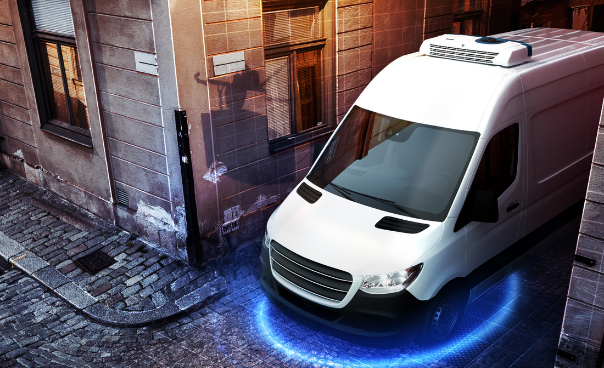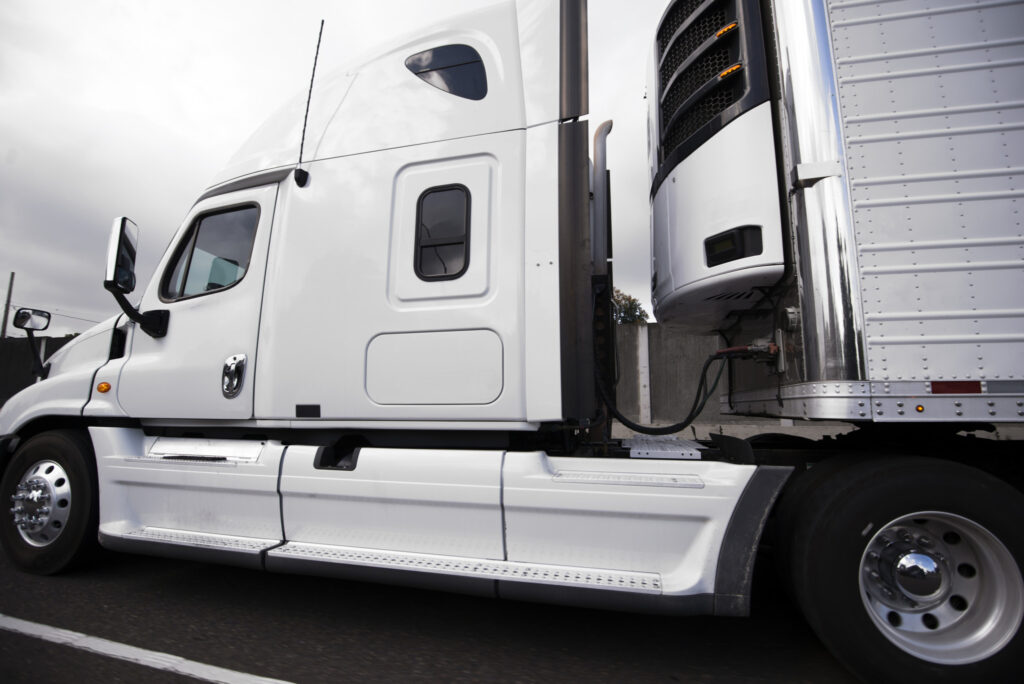Many options being explored to eliminate TRU emissions
Smaller engines that power transportation refrigeration units (TRUs) will not escape scrutiny as the trucking industry faces the broader challenge of decarbonizing commercial vehicles.
In fact, there are already aggressive timelines in place to phase out diesel-powered TRUs in California. Truck-mounted TRUs for vehicles based in the state must transition to zero emissions beginning immediately. Trailer and container TRUs – including those pulled by out-of-state carriers – will need to transition to zero-emissions varieties sometime after 2025.
This means Canadian fleets that run to California should consider adopting a zero-emissions TRU when spec’ing a reefer trailer today, or be prepared to retrofit such a unit in a few years if the trailer will be on the road for a decade or more.

Truck-mounted TRUs operated by California-based companies must transition to zero-emissions models at a pace of 15% per year, with all TRUs operating in the state becoming zero-emissions models by Dec. 31, 2029, according to the California Air Resources Board (CARB). Non-truck TRUs are covered by a Phase 2 regulation that will be presented for consideration by 2025.
At ACT Expo, a variety of options for eliminating TRU emissions were on display. Chris Tanaka, vice-president – product management with Thermo King, noted his company will have a fully electric portfolio by 2023. One of the advantages, he said, will be the expanded use of telematics.
“When you electrify, you digitize,” he said during an ACT Expo workshop, adding that suppliers will be able to help customers optimize fleets by analyzing TRU-generated data.
But Bill Maddox, senior manager – product management with Carrier Transicold, said the transition to zero-emission TRUs will also bring new concerns such as range anxiety. And fleets will have to be more mindful about thermal preservation.
“You may have bought the air-conditioning system with the highest energy efficiency,” he said of homeowners. “But the electric bill is dictated by the insulation value in your house, the thermal efficiency of the windows, and how often the kids leave the doors open while you’re running the AC.”
Fleets will have to give greater consideration to a box or trailer’s insulation, as well as to how often drivers leave the doors open when delivering a load.
“Don’t forget the basics,” warned Maddox. “It’s more than just the TRU. It’s the box itself. Do you need more insulation? Do you need to switch from a roll-up door to swing doors? Those things can make it more thermal-efficient and draw less power.”
Overcoming wasteful habits
Tanaka said diesel-powered TRUs are able to overcome bad habits such as leaving doors open while loading and unloading, or running boxes or trailers with poor insulation. The solution was always to just burn more fuel to maintain temperatures.
“People have gotten away with oversizing systems for bad insulation,” Peter Johnston, co-founder of Volta Air said of traditional diesel units. “By going electric, you need to be more considerate about your system holistically. You can slap a huge unit on and cool a really bad box, but you can’t get away with that as much when you have to integrate the power for it on there.”
Added Tanaka: “You can’t afford the kind of waste that’s inherent in many operations that were just solved with more fuel consumption.”
This is especially true since adding cooling capacity for an electric TRU means adding significant weight in the form of additional batteries. Mac Burns, director of product development with Lightning eMotors, suggested upsizing gross vehicle weight ratings to ensure payload isn’t lost when installing electric TRUs.
As for operational costs, Johnston said a payback can be achieved in as little as a year, especially as diesel prices rise.
“You can’t look at it as purchase price,” he said. “These units are going to be running for 10-plus years. Cost parity is already here.”
He suggested working with leasing companies to defer the higher upfront purchase price. Thermo King’s Tanaka also suggested mining all opportunities for government incentives. The last thing a fleet wants to do is have to deploy fewer units and scale back business due to the higher purchase price of electric TRUs.
In terms of reliability, Burns said Lightning now has electric ambulances in the field, which speaks to the technology’s dependability. “We are fully beyond the stage of science experiments in this industry,” he said. And Tanaka added telematics can be used for predictive maintenance to further improve reliability.
Trailer TRUs
When it comes to trailer refrigeration units, there are more than just electric options to consider when transitioning to zero emissions. TRU makers have employed some creative technologies to power the units.
Robert Koelsch, founder and owner of Advanced Energy Machines (AEM), showcased his company’s product, which includes a solar panel trailer roof and wheel regeneration system that push power into a battery pack mounted underneath the trailer. That energy powers an electric TRU.
Nearly 50% of the daily energy required is generated by the solar panels, he said. “You’re never going to beat the sun, so how can you use the sun?”
He said a lot of what the company does now is retrofitting existing trailers. “You need a powerful system to overcome the lack of insulation,” he said of older trailers.
The AEM system can charge fully in eight hours. In a typical fleet operation, the system can maintain a load at 35 F (about 2 C) with six stops for about 48 hours before requiring a charge, Koelsch said. In a more demanding application – say, delivering 24 pallets of ice cream and maintaining a temperature of -20 F (-29 C) – the battery can last about 11 hours.
Rimas Kapeskas, president of Cold Chain Power, promoted a nitrogen-based cryogenics technology being developed in Europe and coming to North America this year. Liquid nitrogen is about -320 F (-196 C). As it warms up, it expands by 700 times, and through this process a Dearman Expansion Engine produces the cooling temperatures required to maintain the trailer’s internal temperature setting. Harmless nitrogen is vented off when warmed.
“The Dearman Expansion Engine is a very quiet and efficient engine that runs on the expansion properties of nitrogen,” Kapeskas explained. “It produces cooling in a very efficient way.”

As for range, he said, “We can go across the country on a 200-gallon tank in a standard configuration and do chilled from coast to coast. Frozen increases the tank size a little bit. It’s very economical compared to the price of diesel.”
Electric options
Jeff Flath, president and CEO of eNow, spoke of the company’s solar option that he said offers a quick payback using existing TRUs in the market. The technology is TRU- and battery-agnostic, he added. It’s a retrofit system that can now be installed by Fontaine Modification in the U.S.
And Marc Trahand, vice-president and general manager of e-mobility for ConMet, noted even the trailer hub suppliers can help electrify TRUs. ConMet’s PreSet Plus eHub contains an electric motor that can be used as a generator to harness braking energy and feed it into a battery pack mounted underneath the trailer. That energy is used to power a standard Carrier Transicold Vector electric TRU.
Zero-emissions TRUs tend to reduce maintenance requirements, since the diesel engine and associated fluids are eliminated. However, there are other considerations. Solar systems have panels that must be occasionally cleaned.
And while Flath said eNow’s panels are not damaged by snow scrapers, AEMs prefer rollers to scrapers when it comes to removing snow.
“Solar panel manufacturers are making panels that are bigger with fewer seams,” said Koelsch. “We think it can be overcome – it’s going to take a little bit of engineering.”
While batteries can add weight to a TRU, Koelsch said improvements in battery design should allow AEM to produce a system that’s lighter weight than diesel within three years. He noted today’s design is weight-neutral when compared to a TRU with 50-gallon diesel tank.
Have your say
This is a moderated forum. Comments will no longer be published unless they are accompanied by a first and last name and a verifiable email address. (Today's Trucking will not publish or share the email address.) Profane language and content deemed to be libelous, racist, or threatening in nature will not be published under any circumstances.